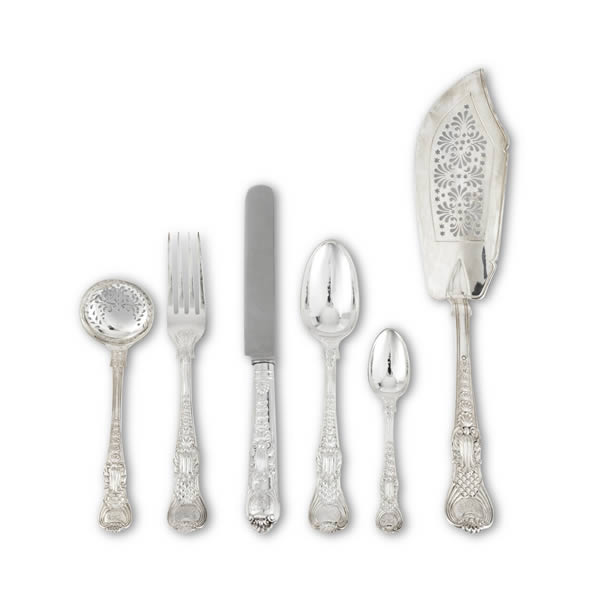Silver Fork Restoration in London
Restoring Function and Elegance to Your Silver Cutlery
Silver forks are timeless pieces that combine functionality with beauty, making them an essential part of fine dining. Whether part of an antique set, a family heirloom, or a more modern collection, silver forks can become tarnished, scratched, or damaged over time. Restoring them ensures they retain their aesthetic charm, functionality, and historical significance.


Why Invest in Silver Fork Restoration?
Restoring silver forks not only enhances their visual appeal but also extends their functionality and lifespan. Whether you are preserving a family heirloom, protecting the value of a collectible set, or simply maintaining your silverware for everyday use, restoration is an investment in both their beauty and practicality.
By ensuring that your silver forks are well-maintained, you preserve their elegance and usefulness for generations to come. Proper restoration allows these timeless pieces to continue serving as functional yet stunning accents at your dining table.
When to Seek Professional Restoration
While minor tarnish removal and cleaning can often be done at home, professional restoration is advisable in the following situations:
- Severe Tarnish or Discoloration: If the tarnish is extensive or if discoloration persists despite cleaning, professional restoration can ensure a thorough result.
- Deep Scratches or Dents: For significant surface damage or dents that affect the fork’s appearance or functionality, experts can restore the fork without causing additional damage.
- Plating Loss: Silver-plated forks with significant wear may need to be replated by professionals to restore their appearance and durability.
- Engraving Preservation: Professionals can carefully restore engraved details without causing any damage to the delicate patterns or design.
Common Issues with Silver Forks
Silver forks, like other silverware, can face a variety of challenges as they age or are used frequently:
- Tarnishing: Silver naturally tarnishes when exposed to air, moisture, or handling, causing a dull or discolored appearance.
- Scratches and Dings: Frequent use, especially in a setting where forks are stacked or rubbed against hard surfaces, can result in surface scratches or dings.
- Plating Wear: For silver-plated forks, the outer silver layer may wear down over time, exposing the base metal underneath.
- Loss of Detail: Engraved or decorated forks may show signs of wear, with intricate details fading or becoming blurred over time.
- Discoloration: Exposure to certain foods, chemicals, or harsh cleaning agents can cause silver forks to discolor or stain.
Why is Silver Fork Restoration Important?
Restoring silver forks preserves their beauty and ensures they remain functional:
- Aesthetic Appeal: Restoration brings back the original shine and beauty of silver, enhancing the overall look of your dining table.
- Functionality: A well-restored fork performs its intended use smoothly, whether for daily meals or special occasions.
- Preservation: Timely restoration prevents further damage, keeping the fork in good condition for years.
- Sentimental or Collectible Value: Many silver forks are heirlooms or part of antique sets, making restoration crucial for preserving their historical or sentimental value.
The Process of Restoring Silver Forks
Restoring silver forks involves both cosmetic and structural care, with a focus on maintaining their aesthetic appeal and functionality:
- Inspection and Assessment
The first step is to thoroughly inspect the fork for tarnishing, scratches, dents, and any loss of detail, particularly if it is engraved or decorated. The type of silver (solid or plated) is also assessed. - Cleaning the Surface
The fork is cleaned with mild soap and warm water to remove any grime or food residue. A soft brush or cloth is used to ensure the surface is free of dirt. - Tarnish Removal
A silver polish or natural solution like a baking soda paste is applied to remove tarnish. This restores the fork’s shine without damaging its details. Special care is taken for engraved forks to preserve the patterns and designs. - Repairing Scratches and Dents
Minor surface scratches are buffed out, and dents are gently worked out. Professionals ensure that any repairs do not compromise the integrity of the fork’s shape or design. - Replating (If Necessary)
For silver-plated forks, a fresh layer of silver may be applied using electroplating to restore its original appearance and protect the base metal from further damage. - Polishing and Finishing
After repairs, the fork is polished to restore its luster. Engraved areas are handled with care to maintain the clarity of the designs. Any final details are carefully finished, ensuring a pristine result.
Maintaining Restored Silver Forks
Once restored, keeping silver forks in excellent condition requires proper care:
- Regular Cleaning: After each use, gently clean the forks with a soft cloth to prevent tarnish buildup and remove food residue.
- Avoid Harsh Cleaners: Only use gentle, non-abrasive products to clean the forks to avoid scratching or dulling the surface.
- Proper Storage: Store silver forks in a dry, tarnish-resistant cloth or case when not in use to minimize exposure to air and moisture.
- Handle with Care: Avoid mishandling or dropping the forks, as this could cause dents, scratches, or bending.
Silver Repairs, Restoration & Silver Plating by post
Send us your silver for restoration, repairs or silver plating with ease! Simply click the button below to download our "Send by Post" Repair Form. Complete the form and mail your silver item to us. Once repaired, your item will be returned to you securely via Special Delivery.
Let us handle your silver with the care it deserves, no matter where you are!

